Trend of Various Diagnostics, Therapeutics and Fatalities Reported at Benazir Bhutto Hospital Rawalpindi Pakistan During 2020
Introduction
Hospitals are meant to ensure availability of healthcare for both acute and chronic health problems. Curative services are made available within limited resources through referral systems to meet the healthcare needs of the population quite effectively and efficiently [1]. Our healthcare professionals work with full devotion to serve an individual, family and the whole community at large with mix of promotive, preventive, curative and rehabilitative healthcare [2]. Provincial and district health departments alone or in collaboration with non-governmental organization can perform their role towards delivery of equitable healthcare services [3]. The importance of diagnostic services of a healthcare facility in its smooth execution cannot be neglected. Timely and accurate diagnosis of ailments can contribute a lot to save the human life in addition to their protection from resultant financial catastrophe.
Diagnostic tests enable our healthcare workforce to constitute a framework that may guide them to treat a patient aptly with good prognosis [4]. Diagnostic modalities particularly imaging techniques have been revolutionized across the globe even in public sector hospitals for their accessibility to the general population [5]. Timely and accurate diagnosis is an indication of positive health outcome through sufficient clinical reasoning and is hence imperative for improving the healthcare indicators of a region [6]. Sustainable Development Goals (SDGs) were declared by UNDP on 1st January 2016 that were supposed to be attained by the nations till 2030 [7]. The third SDG is directly or indirectly linked to all SDGs and is primarily intended for health promotion among individuals of all age groups [8]. Minimum Service Delivery Standards specified for compliance at our healthcare facilities are the least level of services that our patients and healthcare availing people have the right to demand. For this purpose healthcare services should be affordable as well as made available on equitable basis [9].
Mortality is one of the indicators to measure the performance of any healthcare faclility [10]. Disclosing the mortality data of any hospital is meant to improve the healthcare facilities by making the healthcare workers and administrators of it accountable and by approval of healthcare budget for provision of all essential healthcare equipment [11]. The present study is intended to measure the frequency of various diagnostics, therapeutics and mortalities reported at BBH Rawalpindi during 2020 in order to assess the overall working of this hospital amidst COVID pandemic. This will enable our strategic planners to perceive the workload on our tertiary care facilities and need of further resources to ensure provision of healthcare to the general public quite satisfactorily.
Materials and Methods
A cross-sectional hospital record-based descriptive research was done by securing data from administrators of Benazir Bhutto Hospital pertinent to the number of patients visiting the hospital and diagnostic tests (ECG, Echocardiography, X-rays, CT scan, mammography, endoscopy, and Regular/Doppler ultrasound) carried out during 2020. Moreover, data regarding the frequency of various therapeutic procedures like minor / major surgical procedures, dialysis and physiotherapies apart from mortalities reported during 2020 was also gathered. The data analysis was done by Microsoft Excel 2010.
Results
The maximum propensity of the patients visited BBH during earlier months of 2020 with drastic diminution in reporting of cases from March 2020 onwards as shown below in Figure 1. Of the total 17,977 operative procedures carried out at BBH during 2020, about 10,216 and 7,761 constituted major and minor operations respectively as revealed below in Figure 2. Physiotherapies with minimal magnitude were reported during April – July 2020 as shown below in Figure 3. Of the total 12276 dialysis reported during 2020, and about 66% of these dialysis were done among male patients as portrayed below in Figure 4 Out of 3544 mortalities reproted from BBH during 2020, about 3000 were among the patient admitted in wards as revealed in Figure 5.
Discussion
The number of patients visiting the OPD of BBH starting decreasing from March and fell drastically from April – June 2020 with lockdown imposition in Pakistan in response to COVID-19 outbreak that was decided following discussion with all provincial governments [12]. Lockdown imposition became imperative to restrict the transmission of coronavirus infection through maintenance of social distancing [13]. A Chinese city Xi’an was locked down during COVID pandemic due to highest toll of infected cases registered in early 2020 and at risk of emergence of new cases in coming days [14]. No doubt COVID-19 has considerably disturbed all the spheres of life; however our frontline warriors kept on working day and night to save the human lives across the globe. Their stringent efforts towards fighting against coronavirus for saving the humanity are remarkable. Benazir Bhutto Hospital was designated as COVID hospital by the government of Pakistan to make COVID- related healthcare accessible to the inhabitants of Rawalpindi city [15]. Of the various radiological testing carried out at BBH during 2020, drastic decline in X-ray testing was reported from April-July 2020.
Mammographies were done at minimal rate than those of X-rays and CT scans as depicted in Figure 6. Endoscopies were also determined to be at minimal pace during April – July 2020 (Figure 7, Table 1). Although patients’ visit to the hospitals for health issues other than those of COVID-19 were tremendously reduced; about 134 laboratories and 735 hospitals and were identified and deputed to diagnose the COVID-19 cases and manage them by adequate healthcare provision and counseling [16]. COVID-19 pandemic directed the concerned authorities of different countries to look for adequate preparedness in order to fulfill the testing requirements of COVID patients and to get prepared for additional necessities in case of resurgence [17]. Establishment of Telemedicine centre at Rawalpindi Medical University amidst COVID-19 outbreak was also the need of hour to get most of our general population cognizant of coronavirus associated clinical manifestations, safe period of isolation and quarantine in addition to preventive measures [18]. Despite the terror of coronavirus infection, tertiary healthcare facilities remained functional throughout the pandemic to cater the other health issues as well. On reviewing the proportion of ultrasounds done in multiple healthcare domains, the frequency of ultrasonographies was found to be considerably diminished from April – July 2020 particularly among admitted patients.
One of the reasons for seems to be the lockdown imposition during initial stages of pandemic in accordance with instructions of concerned authorities, social distancing and adherence to other precautionary measures. Moreover, operation theatres were completely closed during mid-March 2020 for both elective and semi-elective procedures in order to divert the healthcare workforce toward management of COVID patients [19]. Minor surgical procedures were reported in substantially decreased proportion specially in Urology, Orthopedics and Surgery & Allied operation theatres during 2020 (Figure 2); however, major surgical and allied operations were carried out in addition to those associated with Gynecology & Obstetrics. On getting five COVID-19 confirmed cases in Hong Kong, hospital administrators notified the suspension of patients’ visit with health disorders other than those of coronavirus infection along with those of elective surgeries [20]. These restrictions in healthcare settings might be associated with novelty of COVID-19.
Some of the mediastinal and chest wall surgeries due to linkage with patients’ prognosis could not be postponed and were timely managed even in Asian countries despite the COVID-19 related critical scenario [21]. Similarly physiotherapy of the patients was quite meager due to its non-urgency (Figure 3); however physiotherapy rehabilitation guide 2020 was issued by NHS Trust for provision of adequate physiotherapy services to the COVID infected and recovering patients [22]. On the other hand dialysis of the patients was carried out at the same pace throughout 2020 at BBH (Figure 4). Contrary to our results, a similar study by Trivedi, M et al revealed the suspension of dialysis among renal failure amidst COVID pandemic due to its urgency which is actually illuminating the non-preparedness for the disaster [23]. Struggling for the life of human being is the prime responsibility of the doctors and such negligence should be brought to the attention of our policy makers for apt management of such crucial issues in future.
Mainstream of deaths at BBH was reported during January 2020 even before the detection of first COVID-19 case; however, the frequency of fatalities abruptly increased from April – June 2020 and again diminished in July (Figure 5). Pakistan remained protected from the worst outcome of pandemic in contrast to the neighboring Asian country like India that was adversely hit by this horrible outbreak [24]. Despite the opposition of strict lockdown by the concerned authorities in order to protect the lower social class from starvation, people of Pakistan did not confront with grave health consequences. The underlying positive factors should be given due consideration for possible implementation in hardly struck countries (Figure 8).
Conclusion
Abrupt reduction in diagnostic testing and treatment procedures was reported during mid-2020. Deaths among admitted patients were comparatively more than those coming through emergency of the hospital.
For more Articles on: https://biomedres01.blogspot.com/
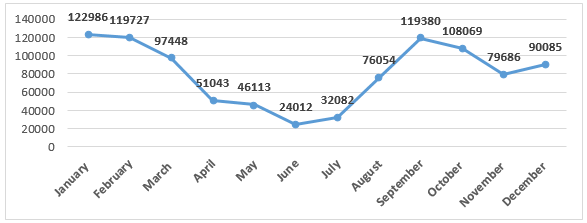
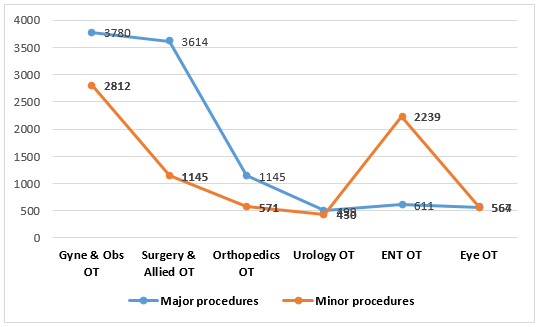
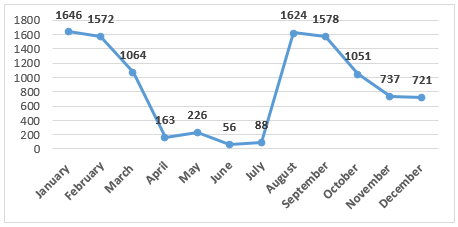
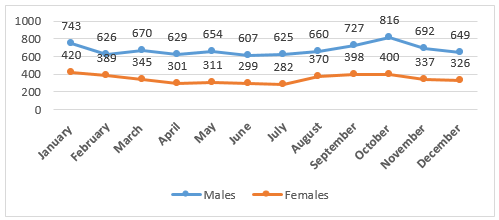
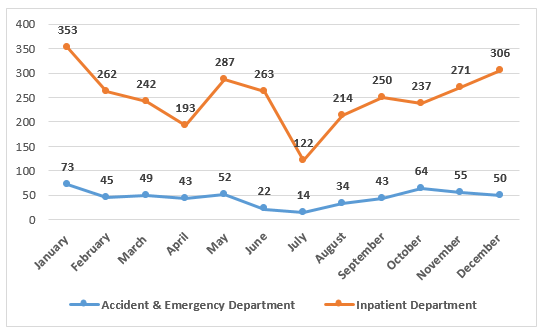
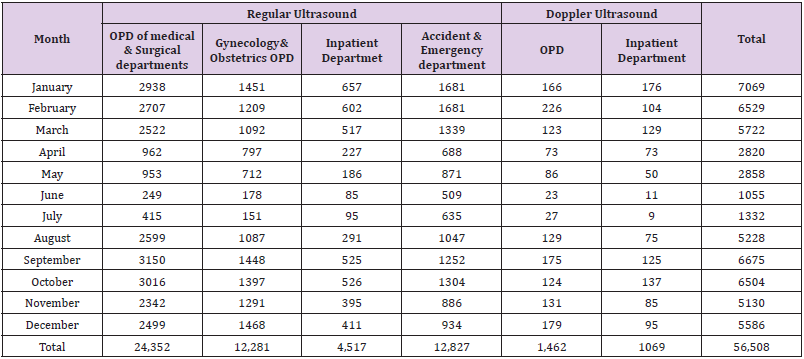

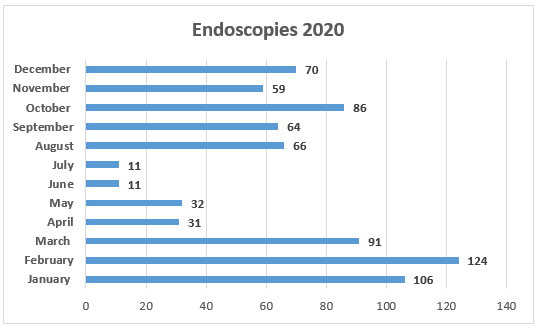
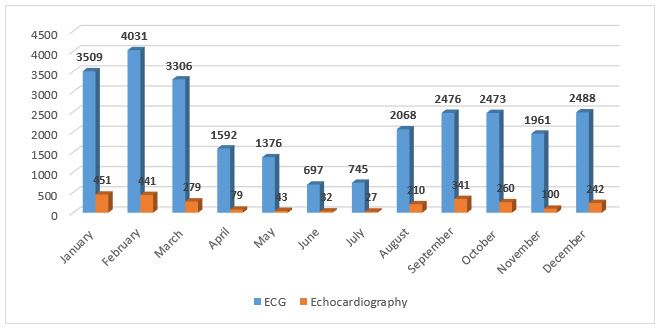


No comments:
Post a Comment
Note: Only a member of this blog may post a comment.